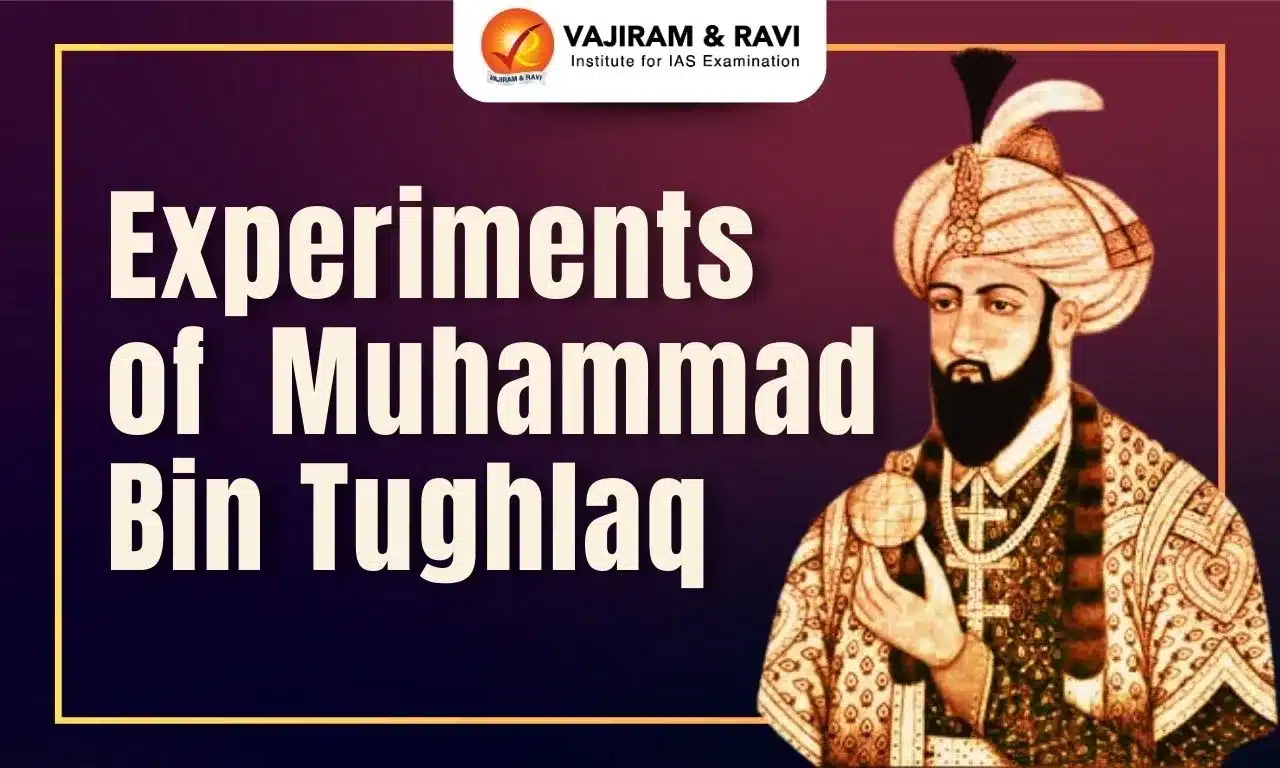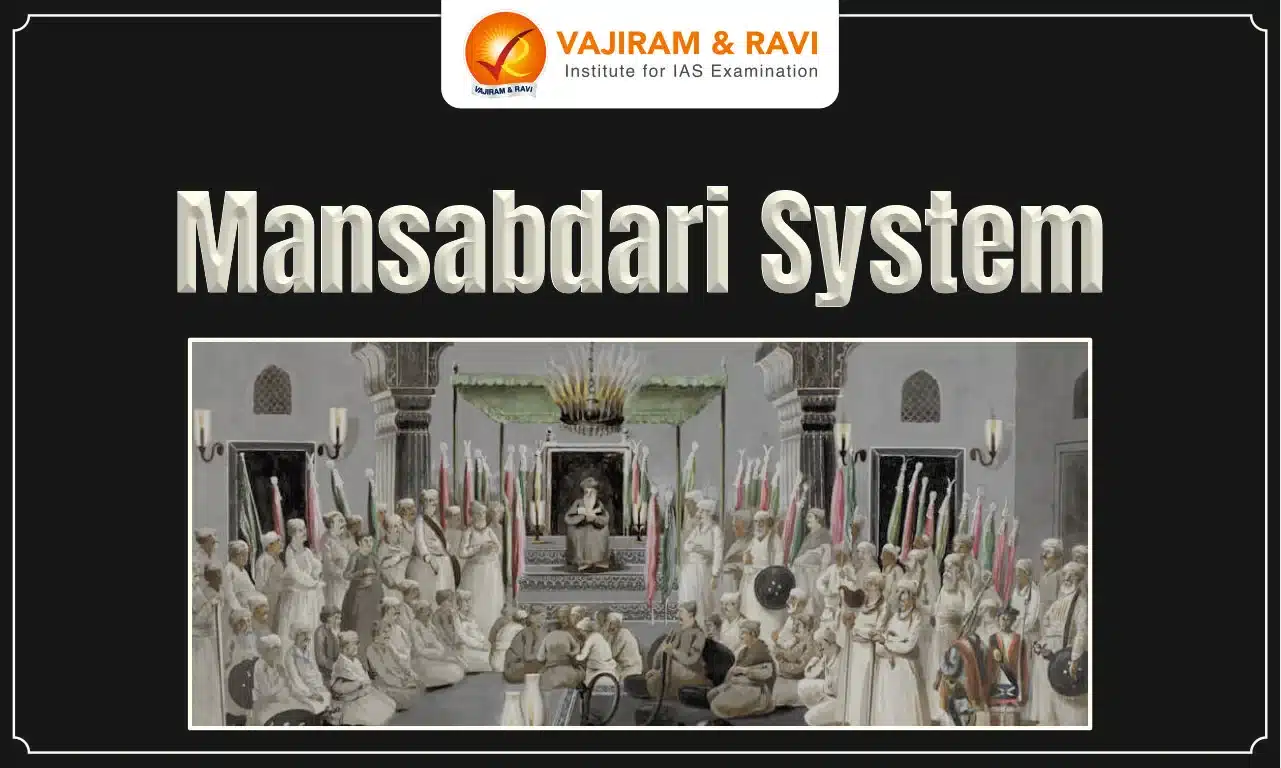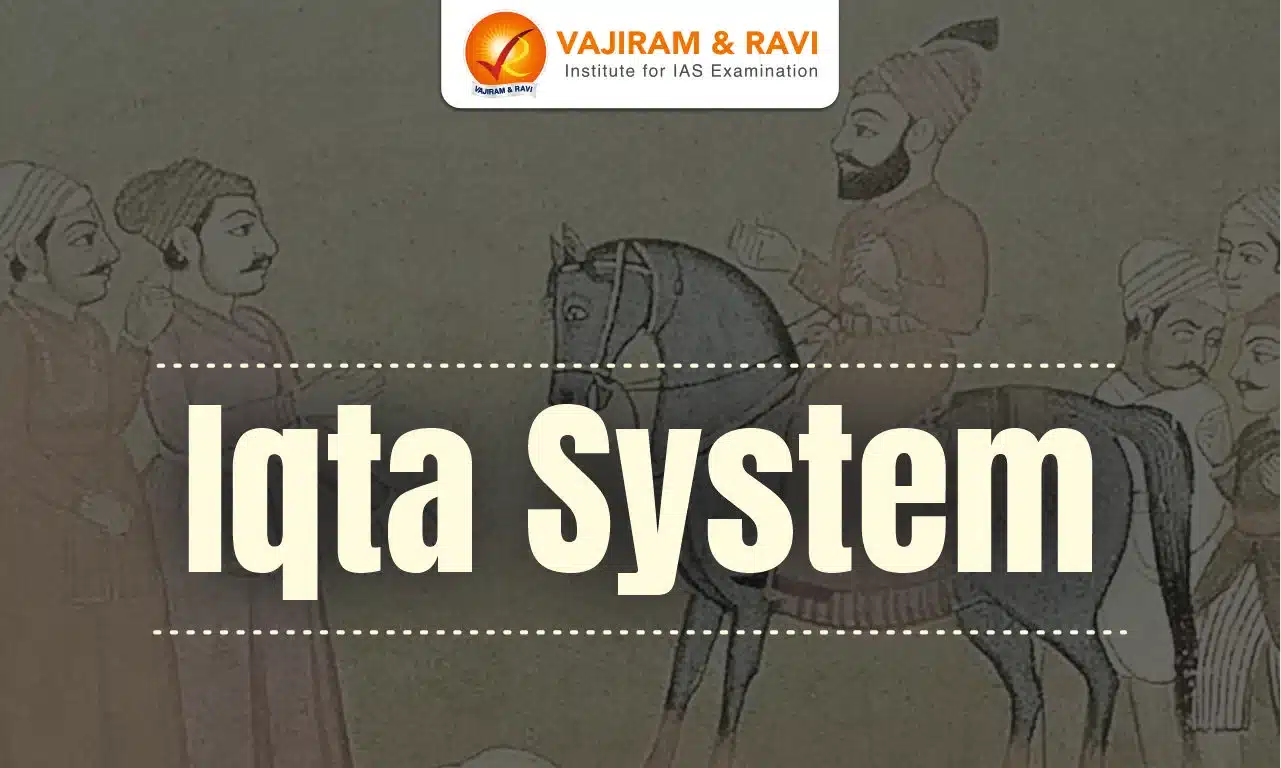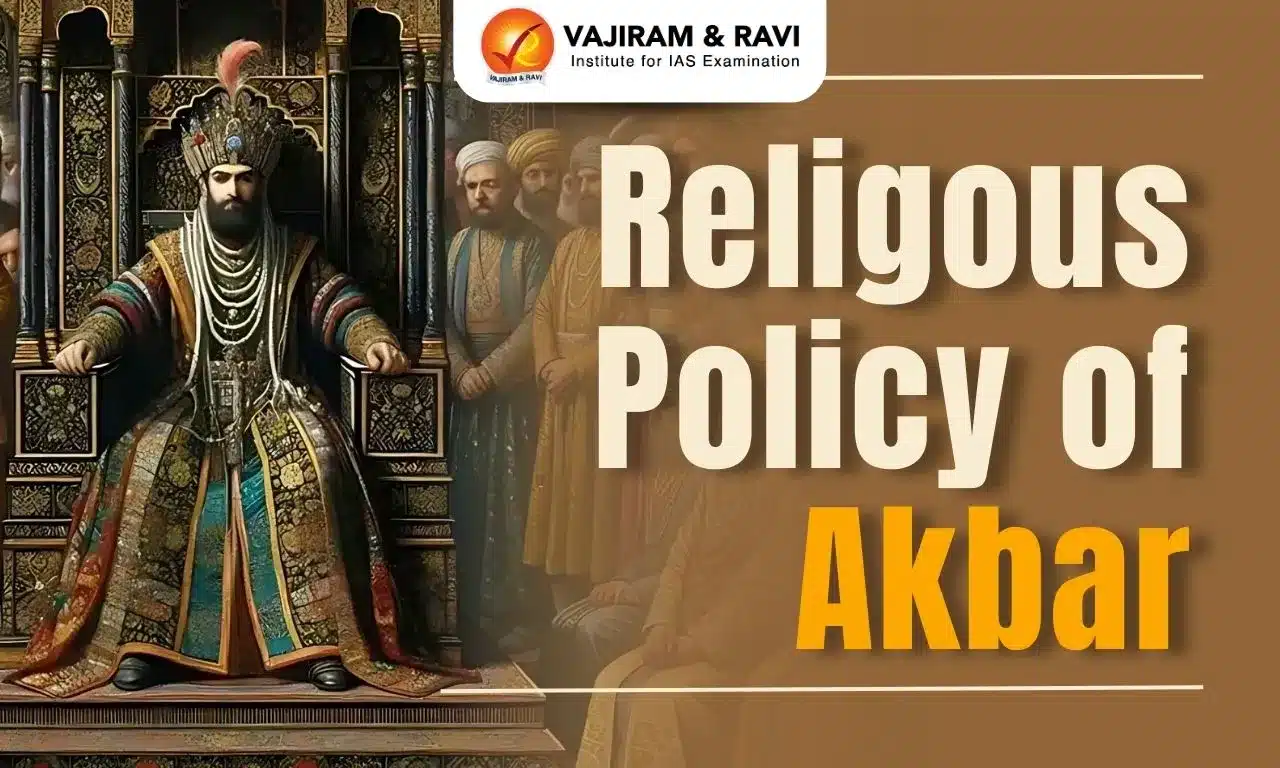Experiments of Muhammad bin Tughlaq reflect a unique blend of ambition and innovation that aimed to consolidate his rule and address the challenges of governance. As the Sultan of Delhi from 1325 to 1351, Experiments of Muhammad bin Tughlaq highlighted his forward-thinking vision. However, the Experiments of Muhammad bin Tughlaq were often marred by poor execution, which undermined their intended benefits.
Among notable Experiments of Muhammad bin Tughlaq were the introduction of token currency to combat the shortage of precious metals, a sharp increase in taxation in fertile regions like the Ganga-Yamuna Doab, and ambitious military campaigns, including the Khorasan expedition. These efforts, though ambitious, caused economic instability, social unrest, and ultimately weakened his reign.
About Muhammad Bin Tughlaq
Muhammad Bin Tughlaq (1290–1351), the 18th Sultan of Delhi, ascended to the throne in 1325 following the death of his father, Ghiyasuddin Tughlaq, marking the continuation of the Tughlaq dynasty. His reign marked the peak of the Delhi Sultanate's territorial expansion, covering regions like Warangal, Ma'abar, Madurai, and parts of Karnataka, which were divided into 23 provinces.
- Social Integration: Muhammad Bin Tughlaq promoted social integration within his empire, appointing Hindus and lower castes to high-ranking positions. He also worked to abolish the practice of Sati, a social injustice he aimed to address within his empire.
- Self-Perception and Authority: Muhammad Bin Tughlaq considered himself equivalent to the Caliph and adopted the title Amir-ul-Mominin, reflecting his elevated self-perception and authority.
- Architectural Development: He built the city of Jahanpanah, the fourth city of Delhi, and also constructed the Fort of Adilabad during his reign.
- Decline and Death: Muhammad Bin Tughlaq's health deteriorated, and he died in 1351 CE while campaigning against Taghi in Sindh.
- Historians like Badayuni noted that his death relieved both him and his people, marking the beginning of the Delhi Sultanate’s decline.
Experiments of Muhammad Bin Tughlaq Overview
Experiments of Muhammad Bin Tughlaq reflect his ambitious vision for his empire, though many of them failed. His attempts to address issues like the scarcity of precious metals through token currency, imposing high taxes in the Ganga-Yamuna Doab, and the poorly executed Khurasan expedition all exemplify his idealistic policies clashing with practical limitations. Despite the failures, his reign offered valuable lessons for future rulers on the challenges of governing a vast, diverse empire.
Experiments of Muhammad Bin Tughlaq Token Currency
Experiments of Muhammad Bin Tughlaq included the introduction of a Token currency in 1330 to address the shortage of silver in his treasury. Inspired by Chinese currency (Kublai Khan had issued paper money), Tughlaq issued Copper coins (Jital) instead of silver tanka, declaring them equivalent in value. However, the concept was unfamiliar to Indians, leading to widespread counterfeiting. This confusion and economic chaos led to the Sultan withdrawing the token currency and pledged to exchange silver coins for copper ones.
Experiments of Muhammad Bin Tughlaq Transfer of Capital
Experiments of Muhammad Bin Tughlaq included moving the capital from Delhi to Daulatabad in 1326-1327 for better administrative control and protection from Mongols. However, the journey was difficult, with many people dying during the heat. The lack of water resources in Daulatabad further complicated the situation. After two years, Tughlaq realized the impracticality of ruling the northern part of the empire from the southern capital and moved the capital back to Delhi.
Experiments of Muhammad Bin Tughlaq Khurasan Expedition
Experiments of Muhammad Bin Tughlaq also included the Khurasan expedition, launched by Muhammad Bin Tughlaq in 1332-1333, aimed to challenge Khurasan's ruler, Abbu Saiid. With a 370,000-strong army, Tughlaq mobilized soldiers and provided advance salaries. Despite challenges, the expedition achieved a partial victory. The ruler of Khurasan acknowledged Tughlaq's authority and agreed to pay an annual tribute.
Experiments of Muhammad Bin Tughlaq Qarachil Expedition
Experiments of Muhammad Bin Tughlaq involve the launch of the Qarachil expedition in 1333 AD to annex the Kullu-Kangra region of Himachal Pradesh. Despite initial success, the campaign faced challenges like heavy rainfall, an epidemic, and resistance from the Hindu Rajput kingdom of the Katoch clan led by Dharm Chand. The Qarachil expedition ultimately failed to achieve its objectives.
Experiments of Muhammad Bin Tughlaq Agrarian Reform
Muhammad Bin Tughlaq introduced significant agrarian reforms aimed at improving and expanding cultivation. He established the Diwan-i-Amir-i-Kohi, a dedicated department for agriculture, which worked on promoting better farming practices and crop rotation.
- Developmental Zones for Farming: The area was divided into development zones, with officials tasked with encouraging farmers to switch to more profitable crops, such as replacing barley with wheat and sugarcane with grapes and dates.
- Emergency Loans: To support farmers in need, emergency loans, such as Taccavi and Sondhar, were provided for buying seeds and enhancing cultivation.
- Setbacks: Despite the ambitious nature of these reforms, the scheme faced challenges due to corruption and mismanagement by officials.
Though unsuccessful during his reign, the agricultural policy was later continued and improved upon by his successors, including Firoz Tughlaq and Akbar.
Experiments of Muhammad Bin Tughlaq Taxation in Doab
Taxation in Ganga-Yamuna Doab by Muhammad Bin Tughlaq in 1334 AD was introduced to recover the losses incurred due to his earlier reforms. He significantly increased the rate of Khara (land tax) by up to 50 percent, particularly in the fertile Doab region, expecting higher revenue.
- Setbacks: The continuous famines that struck the area made it impossible for farmers to meet such high tax demands.
This heavy taxation caused widespread discontent and unrest among the population, as they struggled to pay the increased levies during difficult times.
Experiments of Muhammad Bin Tughlaq Religious Policy
Muhammad Bin Tughlaq's religious policies reflected a blend of tolerance and controversy, marking him as a ruler who navigated the complexities of his diverse empire. He engaged in dialogue with Muslim mystics, Hindu yogis, and Jain saints like Jinaprabha Suri, much to the disapproval of orthodox theologians, who labeled him a 'rationalist' for questioning traditional religious doctrines.
- Celebration of Holi and Diwali: Muhammad Tughlaq's actions, such as being the first Sultan to celebrate Diwali at court, demonstrated his respect for Hindu culture. He also participated in Holi celebrations alongside his Hindu nobles, highlighting his willingness to integrate diverse cultural practices.
Experiments of Muhammad Bin Tughlaq Impact
Experiments of Muhammad bin Tughlaq during his reign, included the introduction of token currency and shifting the capital from Delhi to Daulatabad. However, these experiments ultimately failed, causing widespread distress among his subjects, who suffered from economic hardship, displacement, and administrative chaos.
- Economic Hardship: The token currency led to inflation and devaluing money, while the forced migration to Daulatabad resulted in the loss of lives and economic instability.
- Decline of Delhi Sultanate: As a result, his subjects were reduced to misery, and the failed experiments contributed to the beginning of the process of disintegration of the Delhi Sultanate.
Experiments of Muhammad Bin Tughlaq UPSC PYQs
Q.1 Consider the following statements: (UPSC Prelims 2021)
- It was during the reign of Iltutmish that Chengiz Khan reached the Indus in pursuit Khwarezm prince.
- It was during the reign of Muhammad bin Tughluq Taimur occupied Multan crossed the Indus. 3. It was during the reign of Deva Raya II of Vijayanagara Empire that Vasco da Gama reached the coast of Kerala.
Which of the statements given above is/ are correct?
(a) 1 only
(b) 1 and 2
(c) 3 only
(d) 2 and 3
Ans. (a)
Last updated on November, 2025
→ Check out the latest UPSC Syllabus 2026 here.
→ Join Vajiram & Ravi’s Interview Guidance Programme for expert help to crack your final UPSC stage.
→ UPSC Mains Result 2025 is now out.
→ UPSC Notification 2026 is scheduled to be released on January 14, 2026.
→ UPSC Calendar 2026 is released on 15th May, 2025.
→ The UPSC Vacancy 2025 were released 1129, out of which 979 were for UPSC CSE and remaining 150 are for UPSC IFoS.
→ UPSC Prelims 2026 will be conducted on 24th May, 2026 & UPSC Mains 2026 will be conducted on 21st August 2026.
→ The UPSC Selection Process is of 3 stages-Prelims, Mains and Interview.
→ UPSC Result 2024 is released with latest UPSC Marksheet 2024. Check Now!
→ UPSC Prelims Result 2025 is out now for the CSE held on 25 May 2025.
→ UPSC Toppers List 2024 is released now. Shakti Dubey is UPSC AIR 1 2024 Topper.
→ UPSC Prelims Question Paper 2025 and Unofficial Prelims Answer Key 2025 are available now.
→ UPSC Mains Question Paper 2025 is out for Essay, GS 1, 2, 3 & GS 4.
→ UPSC Mains Indian Language Question Paper 2025 is now out.
→ UPSC Mains Optional Question Paper 2025 is now out.
→ Also check Best IAS Coaching in Delhi
Experiments of Muhammad Bin Tughlaq FAQs
Q1. Who introduced Token Currency?+
Q2. Where was the capital transferred by Muhammad Bin Tughlaq?+
Q3. What was the objective of the Khurasan expedition?+
Q4. Why did the Qarachil expedition fail?+
Q5. Which Department did Muhammad Bin Tughlaq create for agriculture?+
Tags: experiments of muhammad bin tughlaq quest UPSC Medieval History

















